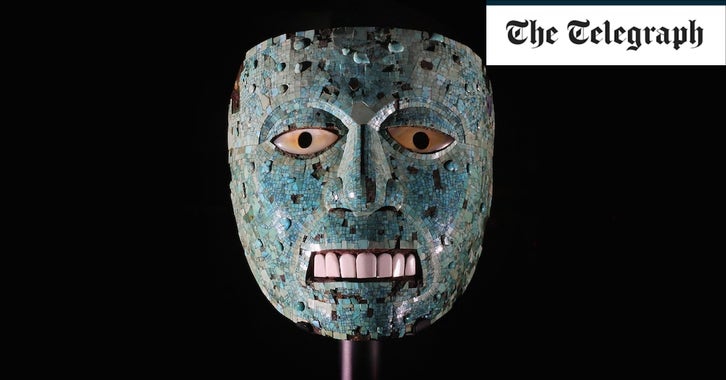‘My advice? Pray before you enter’: The ghost hunter investigating the British Museum
Ghosts of the British Museum documents the many cases that Angell, a 43-year-old American artist, has collected over seven years interviewing employees of the Bloomsbury institution. From a searing heat that descended upon the Mexico gallery, and 200-year-old oak doors opening by themselves, to guards flung to the ground by a mysterious force, there have been unexplained incidents throughout the museum. The Sutton Hoo gallery is something of a hotspot. It contains the magnificent hoard of treasures from the Anglo-Saxon ship burial that was unearthed from a field in Suffolk in 1939. Angell heard that the landowner, Edith Pretty, had been drawn to investigate the earth mounds on her property because she had seen flaming torchlight around them at night – a story that he later confirmed with a researcher who had worked on the Sutton Hoo find.
One day, Angell invited Patsy, a psychic medium, to tour the museum with him. In an area of intense paranormal activity, Patsy began talking in a low voice about exhibits that “shouldn’t have been moved”: medieval Christian relics that had been removed to make way for a new Islamic gallery. She described angry forces from a time when Christendom engaged in bloody crusades to recapture Jerusalem. “You’ve replaced Christianity,” she said, “you have replaced it with something that’s a devil to us.”
…
Some employees are convinced that the hauntings are related to people who died in the museum or who worked there for a long time and have passed away. Yet many, Angell discovered, believe that the objects themselves retain some kind of imprint from their past.
The British Museum, Angell suggests, is different from most places that we associate with hauntings. “We talk about haunted pubs or haunted houses. But inside the British Museum, you have the kingdom of Benin, you have significant portions of the Parthenon, of the Karnak temple.” These exhibits, Angell believes, blur the line between an artefact and where it was taken from. In the book, he writes about how he sees the museum as a black hole, a void that “captures other times within it”.
“You can’t convince me that these things inside the British Museum are tamed,” Angell says. “By putting them in a glass case or numbering the rooms that they’re in, you don’t zap the power of a monument that is 5,000 years old and had a kind of continuous ritual function. I don’t believe that all that just evaporates.”
…
As for those who do still want to visit, Angell warns them to step lightly – some artefacts, he notes, in the culture they come from, are “not meant to be seen by anyone, aside from certain people who are initiated… A lot of the things I have seen in the British Museum, I don’t think they are really meant for my eyes.
“I do pray before I go in there,” he admits, “because you are there with a lot of powerful stuff that you don’t understand very well… I felt I had to be respectful. I continuously asked for safe passage. I wouldn’t go into the British Museum without taking appropriate precautions.”



Add comment